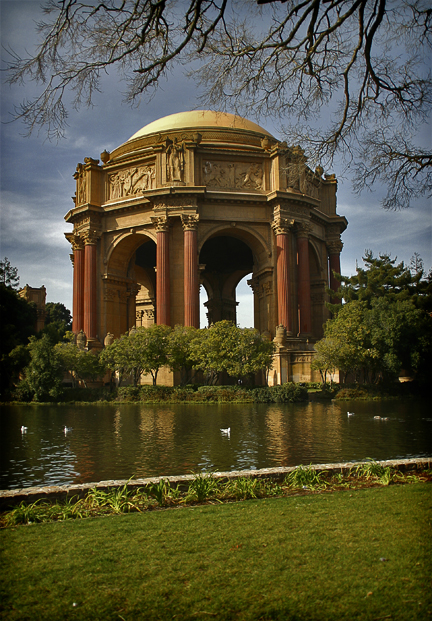F I R S T P R E V
P R E V 993
993 NEXT
NEXT LAST
LAST



The Pan-Pacific Exposition of 1915
To celebrate the completion of the Panama Canal, the U.S decided to host an exposition in 1915. San Francisco was chosen as the site over the rival cities of Baltimore, Washington, D.C., Boston, San Diego, and New Orleans. The Pan-Pacific Exposition was important to the city not only because the canal shaved 7,872 miles of New York to San Francisco ocean travel, but as a chance to showcase a city rebuilt after the earthquake of 1906.
The Exposition's grounds covered a massive 635 acres, over 67 city blocks on San Francisco's northern waterfront. The Exposition featured eleven exhibit halls (for a few years I lived on the spot that once held the the Horticulture Palace) plus the 43-story Tower of Jewels, hung with over 102,000 pieces of hanging cut glass and backed by mirrors. Dozens of foreign countries also built palaces showcasing their exotic foods, customs, and arts. In addition, each of the 48 states had their own pavilion. Oregon built a Parthenon out of Redwood trees, Philadelphia sent the Liberty Bell, and Virginia reproduced Mount Vernon.
The amusement park feature the Aeroscope, a huge structure resembling the Eiffel Tower, that carried 118 passengers at a time to a height of 330 feet. Overhead, biplanes performed acrobatics and below, a racetrack featured Kentucky thoroughbreds. There was a five-acre simulation of the Panama Canal and the Scintillator, a barge that floated out in the San Francisco Bay, packed with 48 beaming searchlights, that projected seven colors of light up into sky.
The Pan-Pacific Exposition lasted nearly 11 months and with much regret was closed in December of 1915. The only remaining buildings from the Exposition are architect Bernard Maybeck's Palace of Fine Arts and rotunda, shown above. The Palace housed 11,400 paintings and sculptures of then living artists. These structures have since been rebuilt to a more permanent construction.
[
MAP E-10 ]